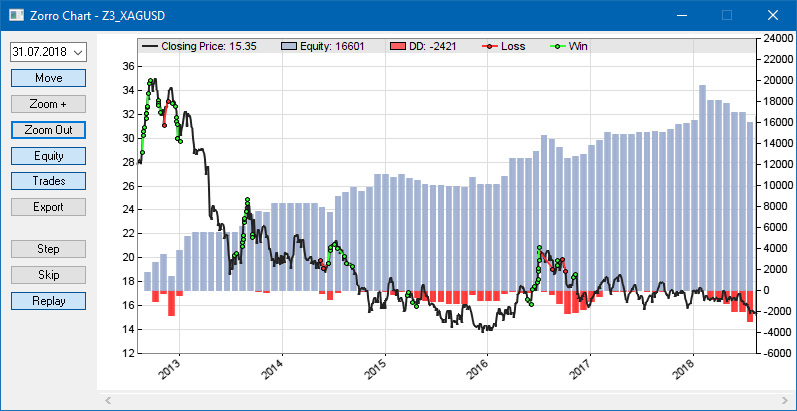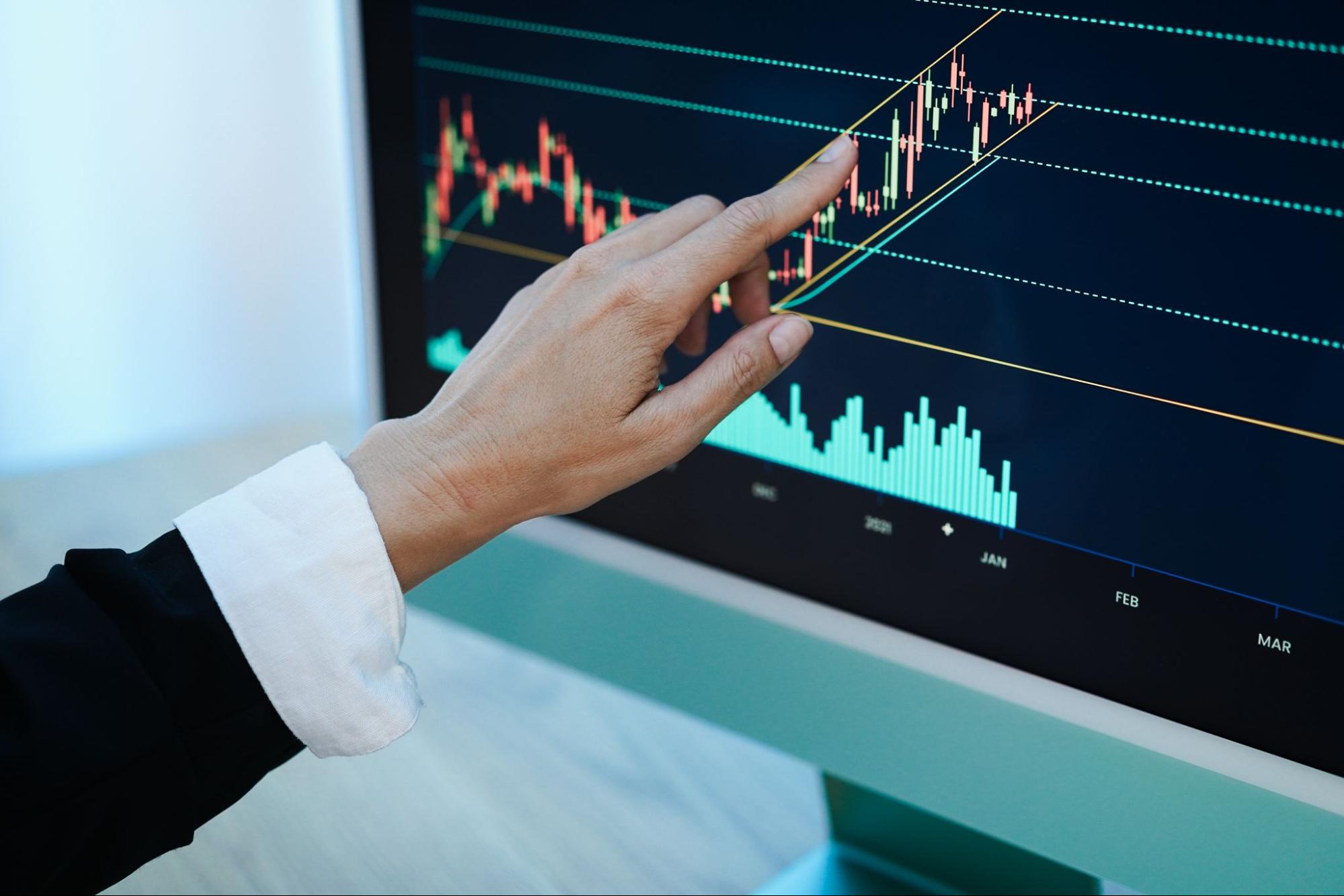If you work as a trader or quantitative analyst, you probably understand how important it is to maximize the performance and execution of your trading algorithms. Automated programs called algorithmic trading methods are made to make trades following pre-established rules, information, and tactics. They provide the opportunity to save expenses, boost revenue, and effectively manage risks in intricate and dynamic marketplaces. But they also have their share of drawbacks, including feedback loops, market effect, slippage, and delay. How can you get beyond these obstacles and make your trading algorithms more successful and efficient? Here are seven suggestions to help you get the most out of your algo trading tactics.
1. Keep a careful eye on your algorithmic Trading Robot
Keeping a careful eye on your Algorithmic trading robots is the first step towards optimizing them.
- Execution speed, fill rate, order size, market depth, volatility, liquidity, and performance standards are just a few of the metrics and indicators you need to closely monitor.
- You should also compare your algorithms with other advanced algorithmic trading techniques, historical data, and different market situations. You can use uTrade Originals, a set of pre-built algorithms created to maximize your trading experience, in addition to receiving precise historical data to test your algo trading methods on platforms like uTrade Algos.
- Errors, flaws, or anomalies that could negatively affect your trading results can be found and fixed with the use of ongoing monitoring. For monitoring algorithms in real time.
- For real-time algorithm monitoring, use tools like dashboards, alarms, logs, and reports.
2. Modify Your Settings
Modifying the parameters of your algorithm in response to shifting market conditions and your trading goals is the second essential phase.
- The variables that determine the logic and behavior of your algorithm are called parameters, and they include things like position sizes, risk-reward ratios, stop-loss and take-profit levels, and entry and exit locations.
- Your algorithms will continue to be responsive and adaptive to signals and moves in the market if you calibrate and adjust your parameters on a regular basis.
- Use strategies like optimization, simulation, and backtesting to make changes in real time.
3. Successful Risk Control
The third optimization pillar is effective risk management.
- Risks include market, execution, operational, and model risks, as well as possible losses or unfavorable results from your trading operations.
- To protect your investment and sustain steady performance, you must proactively and methodically evaluate and reduce these risks.
- To control risks in real time, strategies such risk management systems, limit orders, stop orders, diversification, and hedging should be employed.
- This is where uTrade Algos excels because it offers thorough risk assessment reports to its consumers.
4. Comprehensive Examination

The fourth stage is to test your algorithms often and thoroughly.
- This entails assessing and verifying your algorithms’ performance and functioning in various settings and circumstances.
- To make sure your algorithms are dependable, stable, and consistent, testing should be done before, during, and following deployment.
- To evaluate your algorithms in real time, you can use a variety of testing techniques, including unit testing, integration testing, stress testing, and live testing.
5. Evaluation of Critical Results
Examining your trading performance critically and impartially is the focus of the fifth stage.
- A variety of factors are included in the results of your trading activity, such as earnings, losses, returns, expenses, and efficiency.
- Understanding the advantages and disadvantages of your algorithms requires a thorough and accurate study and interpretation of the outcomes.
- Make use of features such as graphs, charts, statistics, and feedback to review your outcomes in real time. These days, the majority of platforms, such as uTrade Algos, include interactive payoff graphs that help you better understand how altering these parameters would impact the possible results of your trades.
Check this out: Forex Trading Algorithms: Risks and Limitations to learn about Risk Management
6. Constant Improvement of Your Algorithmic Trading Robots

Continually and gradually improving your trading algorithms is the sixth phase.
- The process of improving and fine-tuning your algorithms’ performance and quality in response to input and results is known as continuous improvement.
- Any innovations, adjustments, or alterations that will assist you in reaching your trading objectives should be put into practice.
- Real-time algorithm enhancement greatly benefits from advanced trading techniques, including learning, experimentation, and teamwork.
7. Ongoing Education and Development on Algorithmic Trading
When it comes to optimizing your algo trading techniques, this is the last phase. The field of algorithmic trading is constantly changing. You must accept ongoing learning and development if you want to maintain your competitive edge and maximize your strategies:
- Attend conferences, webinars, and trade courses to advance your knowledge and abilities. Gaining knowledge from seasoned traders and specialists can yield insightful information.
- With a group of algorithmic traders to exchange concepts, methods, and insights. Opportunities for optimization and fresh viewpoints can result from collaboration.
- Be prepared to adjust and change your sophisticated trading tactics in response to fresh data and shifting market dynamics. Long-term success requires constant improvement.
Frequently Asked Questions
Which strategy is best in algo trading?
It’s the million-dollar question, isn’t it? Unfortunately, there’s no single “best” strategy in algorithmic trading. The ideal strategy depends heavily on various factors, including:
- Your Risk Tolerance: Are you comfortable with high volatility for potentially higher returns, or do you prefer a more conservative approach?
- Your Capital: Different strategies require varying levels of capital for effective implementation.
- Your Time Horizon: Are you looking for short-term profits through high-frequency trading or longer-term gains through trend following?
- The Assets You’re Trading: Strategies that work well for highly liquid assets like major currency pairs might not be suitable for less liquid or more volatile instruments.
- Market Conditions: Different market regimes (trending, ranging, volatile) favor different types of strategies.
Instead of searching for the “best,” focus on identifying strategies that align with your individual goals and the characteristics of the markets you intend to trade. Thorough backtesting and optimization are crucial for evaluating the potential of any given strategy.
Which indicator is best for algo trading?
Similar to trading strategies, there’s no universally “best” indicator for algorithmic trading. The effectiveness of an indicator often depends on the specific strategy, the asset being traded, and the prevailing market conditions.
Many algorithmic traders utilize a combination of indicators to generate trading signals and confirm trends. Some popular indicators used in algorithmic trading include:
- Moving Averages: To identify trends and potential support/resistance levels.
- Relative Strength Index (RSI): To gauge overbought and oversold conditions.
- Moving Average Convergence Divergence (MACD): To identify trend changes and momentum.
- Bollinger Bands: To measure volatility and potential price breakouts.
- Volume-Based Indicators: To assess the strength of price movements.
The key is to understand how different indicators work, experiment with them in your backtesting, and determine which ones provide the most reliable signals for your chosen strategy and market.
How to become a successful Algo trader?
Becoming a successful algorithmic trader requires a blend of technical skills, market knowledge, discipline, and continuous learning. Here are some key steps:
- Develop a Strong Foundation: Gain a solid understanding of financial markets, trading principles, and quantitative analysis.
- Learn Programming Skills: Proficiency in programming languages like Python (with libraries like Pandas, NumPy, and TA-Lib) or R is essential for developing and backtesting algorithms.
- Master Backtesting and Optimization: Learn how to rigorously backtest your strategies using historical data and optimize their parameters while avoiding overfitting.
- Understand Risk Management: Develop and implement robust risk management rules to protect your capital.
- Stay Updated with Technology: Keep abreast of the latest advancements in trading platforms, APIs, and data sources.
- Continuously Learn and Adapt: The financial markets are constantly evolving. Successful algo traders are lifelong learners who adapt their strategies to changing conditions.
- Be Patient and Persistent: Building profitable algorithmic trading systems takes time, effort, and resilience. Don’t get discouraged by initial setbacks.
What is the best trading Algorithmic Trading Robot?
Just as there’s no single “best” strategy or indicator, there isn’t one “best” trading algorithm. The effectiveness of a trading algorithm is intrinsically linked to the underlying strategy it implements and how well it’s been optimized for the specific market conditions and assets being traded.
A well-designed algorithm should:
- Clearly Define Trading Rules: Be precise and unambiguous in its entry and exit criteria.
- Incorporate Risk Management: Automatically manage position sizes and stop-loss levels.
- Execute Trades Efficiently: Place orders accurately and at the desired prices.
- Be Robust and Adaptable: Perform consistently under various market conditions or be designed to adapt to them.
Ultimately, the “best” trading algorithm is the one that aligns with your trading goals, effectively implements a profitable strategy, manages risk appropriately, and performs reliably in your chosen markets. This often means developing and refining your algorithms rather than searching for a magic “black box.”
Rea also 16 Forex Algorithmic Trading Strategies (Pros and Cons)
